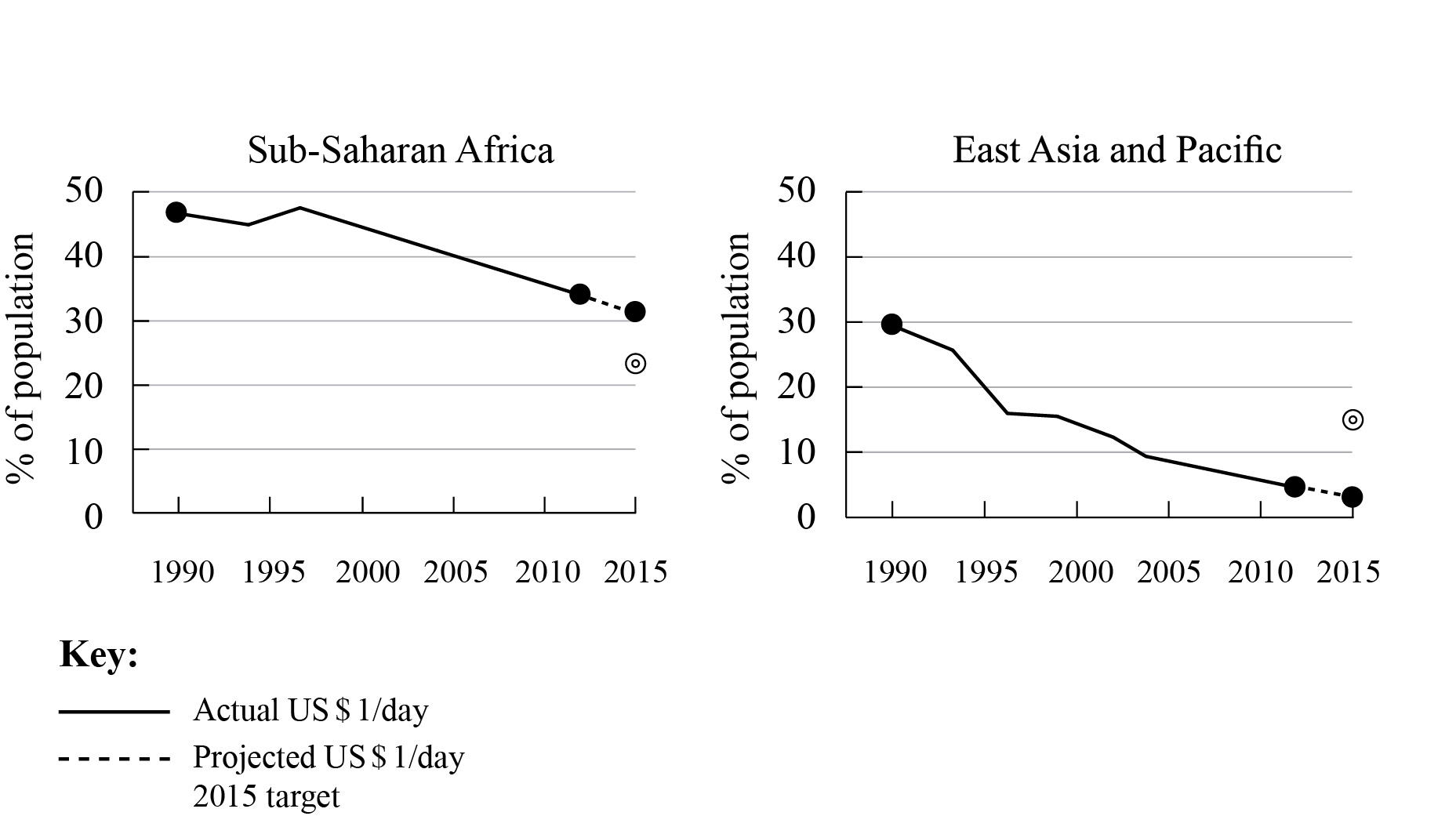| Date | November 2012 | Marks available | 5 | Reference code | 12N.1.bp.2 |
| Level | SL and HL | Paper | 1 | Time zone | |
| Command term | Explain | Question number | 2 | Adapted from | N/A |
Question
The graphs show the progress made towards Millennium Development Goal 1 (percentage of population living on less than US$1 per day).
[Source: www.siteresources.worldbank.org]
(i) State which region has met its target.
(ii) Identify the year when this region first met its target.
Suggest two reasons why some regions may not meet their 2015 target.
Explain how increased trade and market access can sometimes help reduce disparities between countries.
Markscheme
(i) East Asia and Pacific.
(ii) Accept any year in the range 1998–2000.
- Population growth outstripping resources/progress
- Corruption / misappropriation of taxes/loans
- Global recession may mean less aid/funds available in some regions
- External debt diverts money which could be used for development
- War/conflict (internal/civil or external) can reverse progress made
- Natural disasters for example, earthquake in Haiti.
There are other possibilities. Do not credit gross generalizations such as people being uneducated. Reference would need to be made to lack of formal educational opportunities and how this impacts upon targets.
Two distinct reasons that are linked to the target of reducing the number living on less than a dollar a day need to be stated and developed.
Responses should demonstrate knowledge and understanding of what increased trade and market access means for [1 mark]. Possible explanations could focus on removal of tariff barriers, free ports, fair trade, reduced protectionism and/or trading blocs [1 mark].
The rest of the response should look at how this increased access helps to reduce disparities [3 marks].
Award [1 mark] for each basic explanation, with additional marks for extension and exemplification.
For example: China joining the WTO and opening up its economy has allowed it to become “the workshop of the world” and increase its prosperity.
Candidates may note the “sometimes” and should be credited for explanations that show how increased trade and market access can increase disparities.
Examiners report
(i) No problems for most candidates.
(ii) No problems for most candidates, some inaccuracies.
The best responses focused on reasons why the target of US $ 1 a day will not be met by some nations/regions. Reasons linked to debt, the global recession, disease, or a natural disaster, were the most popular. It was disheartening to see some candidates still refer to the “country of Africa” in their answers here. There were many responses that just generically explained why countries are not developing but did not explain their reason in relation to this particular target. This limited the marks awarded.
The best answers demonstrated excellent knowledge and understanding of trade and market access: explanations with specific geographical exemplification such as trade blocs, economic communities and cooperative unions. These then linked their knowledge to the reduction of disparities via investment, job creation, infrastructural development and even looked at non-economic elements of disparities. However, for many candidates this question did prove difficult and some candidates struggled to move beyond just writing about the advantages of having a TNC in a low-income country. This was not the question.

